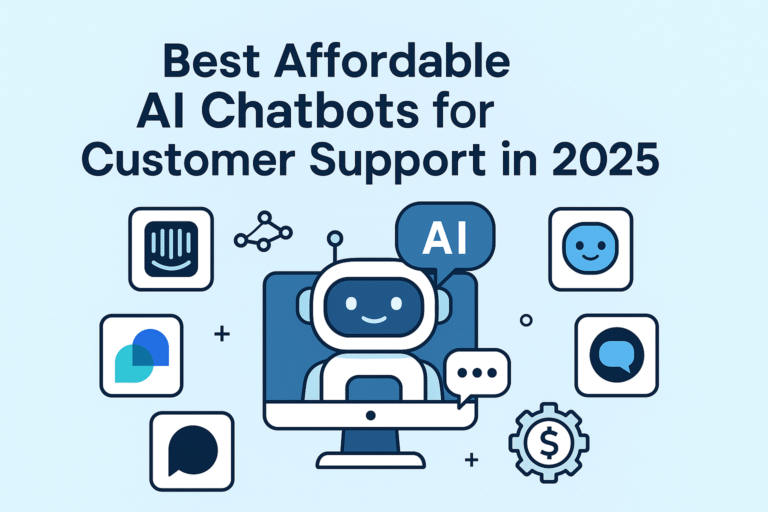As we step into 2024, businesses are adapting to new trends and emerging technologies that are reshaping how they operate. From artificial intelligence to sustainability efforts, the latest innovations in business practices are aimed at improving efficiency, customer satisfaction, and profitability. In this blog post, we’ll explore the top 5 innovations that businesses need to watch out for in 2024.
1. AI-Driven Decision Making
AI has been making waves in various industries, and its role in business decision-making is becoming indispensable. By leveraging real-time data analysis and predictive analytics, businesses can make smarter, more informed decisions faster.
Key Features:
- Real-time data processing for faster insights.
- Predictive analytics for better forecasting.
- Automation of routine tasks and reporting.
Pros:
- Increased efficiency in decision-making processes.
- Better forecasting and business insights.
- Reduction in human error through automation.
Cons:
- High initial cost for implementation.
- Requires skilled professionals to manage AI tools.
Pricing: The cost of implementing AI-driven decision-making varies depending on the platform and size of the business. It can range from $10,000 to over $100,000 annually for advanced AI systems.
2. Remote and Hybrid Work Models
The COVID-19 pandemic introduced remote work as a necessity, but in 2024, it has become a permanent fixture for many businesses. Companies are optimizing their operations around remote and hybrid work models, allowing employees flexibility while maintaining productivity.
Key Features:
- Use of cloud-based collaboration tools (e.g., Slack, Zoom, Microsoft Teams).
- Flexible work schedules to accommodate remote staff.
- Emphasis on employee well-being and work-life balance.
Pros:
- Improved employee satisfaction and retention.
- Reduced operational costs (office space, utilities).
- Access to a wider talent pool, globally.
Cons:
- Challenges with communication and collaboration across time zones.
- Possible lack of work-life separation for employees.
Pricing: Collaboration tools like Zoom, Microsoft Teams, and Slack start from free versions to around $12-$30 per user per month for premium packages.
3. Sustainability and Green Business Practices
Sustainability is becoming more than a trend; it’s becoming a core element of many business strategies. From reducing carbon footprints to promoting eco-friendly products, companies are increasingly prioritizing sustainability to attract customers and lower costs.
Key Features:
- Renewable energy sources and green building practices.
- Sustainable supply chain management and waste reduction.
- Environmentally-friendly products and services.
Pros:
- Positive brand reputation among eco-conscious consumers.
- Long-term cost savings (energy efficiency, less waste).
- Potential for tax breaks and incentives for green initiatives.
Cons:
- High upfront costs for transitioning to sustainable practices.
- Requires comprehensive changes in supply chain and operations.
Pricing: Transitioning to renewable energy sources and sustainable practices may cost businesses anywhere from $5,000 to $50,000, depending on their size and industry.
4. Blockchain for Supply Chain Management
Blockchain technology is revolutionizing how companies manage their supply chains. It provides an immutable, transparent record of every transaction, ensuring authenticity, improving security, and reducing fraud. Blockchain’s role in supply chain management has become one of the most exciting developments in business.
Key Features:
- Enhanced traceability of products from origin to consumer.
- Immutable transaction records that are tamper-proof.
- Smart contracts for automated, self-executing transactions.
Pros:
- Greater trust and transparency in the supply chain.
- Reduces risk of fraud and counterfeiting.
- Efficient and streamlined operations via smart contracts.
Cons:
- Requires significant investment and technical know-how to implement.
- Interoperability issues with older systems.
Pricing: Implementing blockchain for supply chain management typically ranges from $10,000 to $200,000 depending on complexity and scale.
5. Data-Driven Personalization
In 2024, companies are increasingly using big data to provide highly personalized experiences for their customers. Data-driven personalization enhances customer engagement by tailoring offers, products, and services to individual preferences and behaviors.
Key Features:
- Customer segmentation based on behavior and demographics.
- Personalized product recommendations and marketing campaigns.
- Use of machine learning for predictive customer interactions.
Pros:
- Improved customer satisfaction and loyalty.
- Higher conversion rates from personalized marketing.
- Increased customer lifetime value.
Cons:
- Requires large amounts of customer data, raising privacy concerns.
- Complex algorithms and data tools require expertise.
Pricing: Data-driven personalization software ranges from $1,000 to $10,000 per month depending on the level of personalization and volume of data being processed.
Conclusion
As businesses continue to evolve in 2024, staying ahead of these innovations will be crucial for maintaining a competitive edge. AI-driven decision-making, remote work models, sustainability, blockchain, and data-driven personalization are not just trends—they are the future of business practices. By adopting these innovations, companies can optimize their operations, improve customer satisfaction, and enhance profitability.








